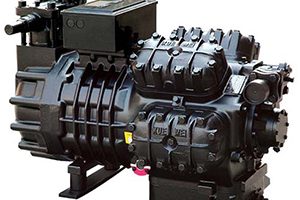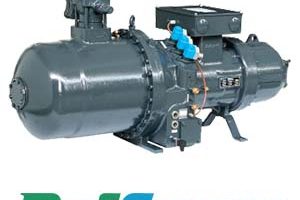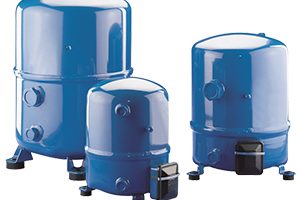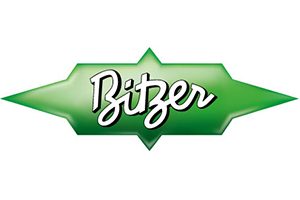Why Do Cold Storage Compressors Fail? Common Problems and Root Causes
Imagine a scorching summer day when a cold storage unit filled with food or pharmaceuticals suddenly shuts down. In that moment, all attention turns to the compressor — the most critical and expensive component of the refrigeration system. A compressor failure can bring the entire operation to a halt, often resulting in costly repairs or replacements.
Yet, many of these breakdowns are entirely preventable with proper maintenance and early intervention.
In this article, we’ll explore five of the most common compressor failures in cold storage systems — their main causes, preventive measures, and practical repair solutions.
Motor Winding Burnout
Symptoms include a burning smell, blown fuses, and abnormal current during startup. In severe cases, the motor becomes completely inoperative.
Repair Actions Preventive Actions Possible Causes • Test motor winding resistance and insulation condition. • In minor cases, rewinding may restore proper operation. • For severe burnout, replacing the entire winding — or even the compressor — is often more economical. • Use a voltage stabilizer or automatic voltage regulator. • Select a compressor that matches the actual refrigeration load. • Adjust superheat properly to prevent abnormal suction temperature. • Regularly clean and service suction lines and filters. • Low voltage or continuous operation under high amperage. • Compressor capacity mismatch with actual load. • Excessively hot suction gas reducing winding cooling efficiency. • Suction line blockage or insufficient refrigerant flow through the motor section. Liquid Hammering (Refrigerant Slugging in the Compressor)
This malfunction leads to broken valves, abnormal noise, and in severe cases, serious mechanical damage to the compressor.
Repair Actions Preventive Actions Possible Causes • Inspect valves, connecting rods, and crankshaft • In minor cases, replace damaged valves or mechanical parts • In severe damage, complete compressor replacement is inevitable • Overcharging of refrigerant • Undersized or low-efficiency evaporator • Improper superheat adjustment of the expansion valve • Faulty solenoid valve or expansion valve • Sudden load fluctuations or partial-load operation of the compressor • Overcharging of refrigerant • Undersized or low-efficiency evaporator • Improper superheat adjustment of the expansion valve • Faulty solenoid valve or expansion valve • Sudden load fluctuations or partial-load operation of the compressor Bearing and Crankshaft
FailureSymptoms include metal-to-metal grinding noise, increased compressor current, and reduced cooling performance.
Repair Actions Preventive Actions Possible Causes • Drain and thoroughly clean the oil circuit and crankcase • Replace bearings and, if necessary, the crankshaft • In severe damage, replacing the entire compressor is more cost-effective • Use high-quality oil compatible with the refrigerant type • Properly design the oil return piping • Install and replace oil filters at regular intervals • Periodically test oil for acidity and metal contamination • Insufficient oil level in the compressor crankcase • Improper oil return • Use of incompatible or incorrect oil type/viscosity • Oil contamination with moisture, acid, or metallic particles High Condensing Pressure
Symptoms include excessive condenser temperature, increased compressor current, and frequent activation of protection systems (Overload or High-Pressure switch).
Repair Actions Preventive Actions Possible Causes • Thoroughly clean the condenser and ensure adequate airflow • Replace any defective fan or water pump • Remove excess refrigerant if the system is overcharged • Regular cleaning of the condenser and inspection of fans or pumps • Maintain proper refrigerant charge within standard limits • Select a condenser suitable for the ambient temperature and installation site • Dirty condenser or insufficient airflow • Faulty condenser fan or water pump (in water-cooled systems) • Overcharging of refrigerant • Improper condenser design for the local ambient conditions Reduced Efficiency and Cooling Capacity
The cold storage struggles to reach the desired temperature, and the compressor runs continuously without stopping.
Repair Actions Preventive Actions Possible Causes • Perform thorough vacuuming during installation or system repairs • Install and periodically replace high-quality filter driers • Regularly test the system for leaks and ensure proper refrigerant charge • Periodic maintenance of the expansion valve and superheat adjustment • Perform thorough vacuuming during installation or system repairs • Install and periodically replace high-quality filter driers • Regularly test the system for leaks and ensure proper refrigerant charge • Periodic maintenance of the expansion valve and superheat adjustment • Presence of moisture or acid in the system, or blockage in the expansion valve or filter drier • Malfunctioning or improperly adjusted expansion valve • Refrigerant leakage, resulting in reduced system refrigerant • Blocked refrigerant paths due to contamination
Summary
Cold storage compressors rarely fail without a reason. In most cases, issues arise from poor design, incorrect refrigerant charge, improper oil selection, or neglecting regular maintenance. By following a few simple principles, the compressor’s lifespan can be significantly extended, avoiding costly repairs or replacements.
Related posts
Cold Room Compressor failure
Refrigeration Compressors from Leading American, European, and Asian Brands Refrigeration compressors are essential components of cold room systems, available in
Refcamp compressor Refcamp was founded in 1991 as a refrigeration compressor manufacturer in Italy. Refcamp’s production facilities are equipped with
Danfoss Compressors: A Legacy of Excellence The renowned Danfoss compressors, originally pioneered by Maneurop, have been at the forefront of
Introduction to Bitzer Compressor and Company History Germany’s Bitzer Company is a leading manufacturer specializing in refrigeration and air conditioning
What Is Ammonia Screw Compressor? An ammonia screw compressor is a type of compressor used in industrial refrigeration systems to




